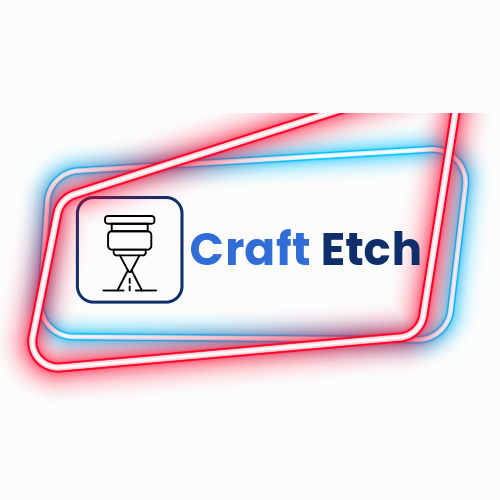Join Workshops
Physical Address
304 North Cardinal St.
Dorchester Center, MA 02124
CNC vs Laser Cutter [In-depth Comparison]
Many of us still confuse ourselves with the terms ‘CNC’ and ‘Laser cutter’. We will discuss them here and make a comparison that aims to clarify your queries.
In a nutshell, CNC is a mechanism and laser cutters are a type of CNC machine.
However, there is something else you should look at.
What is CNC?
CNC stands for Computer Numerical Control and is a computer-controlled cutting process that is generally used in manufacturing industries. It involves the use of computers to control machine tools such as lathes, mills, routers, and grinders. The tooling is controlled by a computer in all aspects, including speed, feed rate, and coordination.
Pros of CNC machine
Precision and Accuracy: For instance, if you’re producing a component like the rotor of a jet engine, a CNC machine can create it with a level of precision that would be nearly impossible to achieve manually. The best example could be motor vehicle manufacturers like ‘Mitsubishi’ where different parts come from a CNC cutter that does not require repetitive input except supervision.
Consistency: If you’re tasked with producing 1,000 identical parts for a car, a CNC machine will ensure each piece is the same, which can be challenging with manual operation. Most importantly, you do not need to tell the machine 1000 times to make the same amount of parts. It only requires a single instruction.
Complexity: Imagine a complex piece like a transmission system parts; a CNC machine can carve intricate details and curves that would be difficult to achieve manually. Most importantly, a CNC machine will store of your instructions like a coffee dispenser. You just need to select what you want to make and it will.
Safety: For instance, in a factory manufacturing metal parts, using CNC machines reduces the risk of accidents as workers are not directly handling the cutting and shaping tools. However, feeding and transferring metal sheets from a CNC machine can cause safety issues where manual precaution practices are required.
Less Labor Intensive: In a scenario where you need to produce large volumes of a product quickly, like for a big order, CNC machines can dramatically cut down on labor hours needed.
![CNC vs Laser Cutter [In-depth Comparison] 1 CNC-vs-Laser-cutter-differences-3-1536x864](https://craftetch.com/wp-content/uploads/2024/07/CNC-vs-Laser-cutter-differences-3-1536x864-1-1024x576.webp)
Cons of CNC Machine
High Initial Cost: For instance, a small start-up company might struggle with the initial investment needed to purchase a CNC machine, as it’s significantly more expensive than traditional machinery. The actual cost will depend on so many factors such as size, capacity country of origin, etc.
Training: If a company switches over to CNC machines, it will need to invest time and resources in training its employees to operate and program the machines. Sometimes an organization trains people and they move to another for a better salary. This is a big problem for the start-ups.
Maintenance: For example, a CNC machine’s consistent use might lead to faster wear and tear, and the cost to maintain or repair could be high, especially if specialized parts or a technician is needed. Once the dye of my CNC machine was broken and I had to spend $1500 to replace that. Another trouble we face is when the CNC control panel breaks down which requires a hefty amount of money.
Limited Materials: Take the example of certain very hard alloys or specific types of plastic, they might not be suitable for CNC machining, limiting the range of products that can be produced.
Job Displacement: In industries where CNC machines are used extensively, such as automobile manufacturing or aerospace, there could be a significant reduction in manual labor jobs, leading to job displacement. However, an organization can always utilize manpower on another job which depends on the supervisors’ mentality.
What is a laser cutter?
A laser cutter is a type of CNC machine that uses a laser beam to cut different materials. Laser cutting is works in the same way as the CNC mechanism, having the only difference that the entire cutting process is a non-contact method.
These are the positive sides of laser cutting:
- Laser cutters offer high precision which contributes to faster and less waste-cutting
- A laser cutter can cut consistently as per the instructions
- Laser beams can be used to cut different materials such as wood, leather, fabric, and even metal
- Laser cutting is a non-contact process thereby there’s less risk of metal deformation
Below are the negative sides of a laser cutter:
- Sometimes laser cutters are risky, if you are not following all the safety guidelines.
- Buying a laser machine would cost you high compared to other cutting machine
- The laser does have material cutting limitation
What are the differences between CNC and laser cutters?
CNC is a name of technology and laser cutting is one type of CNC. Below are the in-depth comparisons between these two.
![CNC vs Laser Cutter [In-depth Comparison] 2 cnc vs laser cutter](https://craftetch.com/wp-content/uploads/2024/07/cnc-vs-laser-cutter-1024x576.webp)
Technological difference
CNC machines use different blades to cut through a material whereas a laser uses a laser beam to cut. In both cases, the precision reaches to 0.001 inch. However, laser works better for intricate cutting, and CNC is suited for industrial cutting.
Difference in material versatility
CNC machines can work with a wide range of materials, they might struggle with very hard alloys or specific types of plastics. Whereas the laser cutters work on plastic, wood, metals, and glass. However, materials that are highly reflective and heat resistant are difficult to cut with lasers.
Difference in operational efficiency
Both laser cutter and CNC can cut at an efficiency of 30 to 100 inches per minute. But, depending on the material, the usage varies. For example, in a garments factory, a laser would cut less than the CNC and the fabric is heat sensitive so you cannot just put laser beams over the fabrics and move to next.
Alternatively, a parts manufacturer who needs thousands of small metals at a particular shape would have maximum efficiency with laser because of less material wastage and batch processing ability.
![CNC vs Laser Cutter [In-depth Comparison] 3 cnc machine](https://craftetch.com/wp-content/uploads/2024/07/cnc-machine-1024x576.webp)
Difference in Energy consumption
You can control the percentage of laser power in a laser machine that effectively addresses the power consumption and cost. However, a CNC machine would consume the exactly same amount of power since the entire machine works regardless considering the material type.
Difference in usage
Primarily, both CNC and laser machines are used for cutting. But there are some works where CNC suits best. For example, wood carving would be easier with a CNC machine rather than using laser cutters.
Laser is best for precision cutting and engraving. Whereas CNC cuts and carves better due to X,Y,Z axis movement.
Ease of use
A CNC cutter would require clamps to hold the workpiece. Stability is crucial for the CNC because the cutting process creates pressure and vibrations. In comparison, laser cutters do not require any clamp to hold the workpiece since the cutting process is purely contact.
Users’ expertise
To operate a CNC mill, the user needs to understand G Code and software like CAD. Whereas the laser machine can be with little knowledge of computer as the laser engraver runs on software like Lightburn which is straightforward. However, canvas settings in Lightburn are crucial as the different parameters affect the cutting result.
Diversity of usage
With a laser cutter, you can also engrave materials even the tumblers or water bottles. Whereas, the CNC cutters only cut, obviously at an industrial grade.
Conclusion
In conclusion, both CNC machines and laser cutters serve unique purposes and offer distinctive advantages. Both provide high precision, making them essential in industries that require meticulous detail and accuracy. Both technologies require a substantial initial investment and ongoing costs, as well as specialized training for operation. Therefore, the choice between a CNC machine and a laser cutter will depend on the specific requirements of your project or business, considering factors such as the material to be cut or processed, the volume of production, the intricacy of the design, and available resources.







